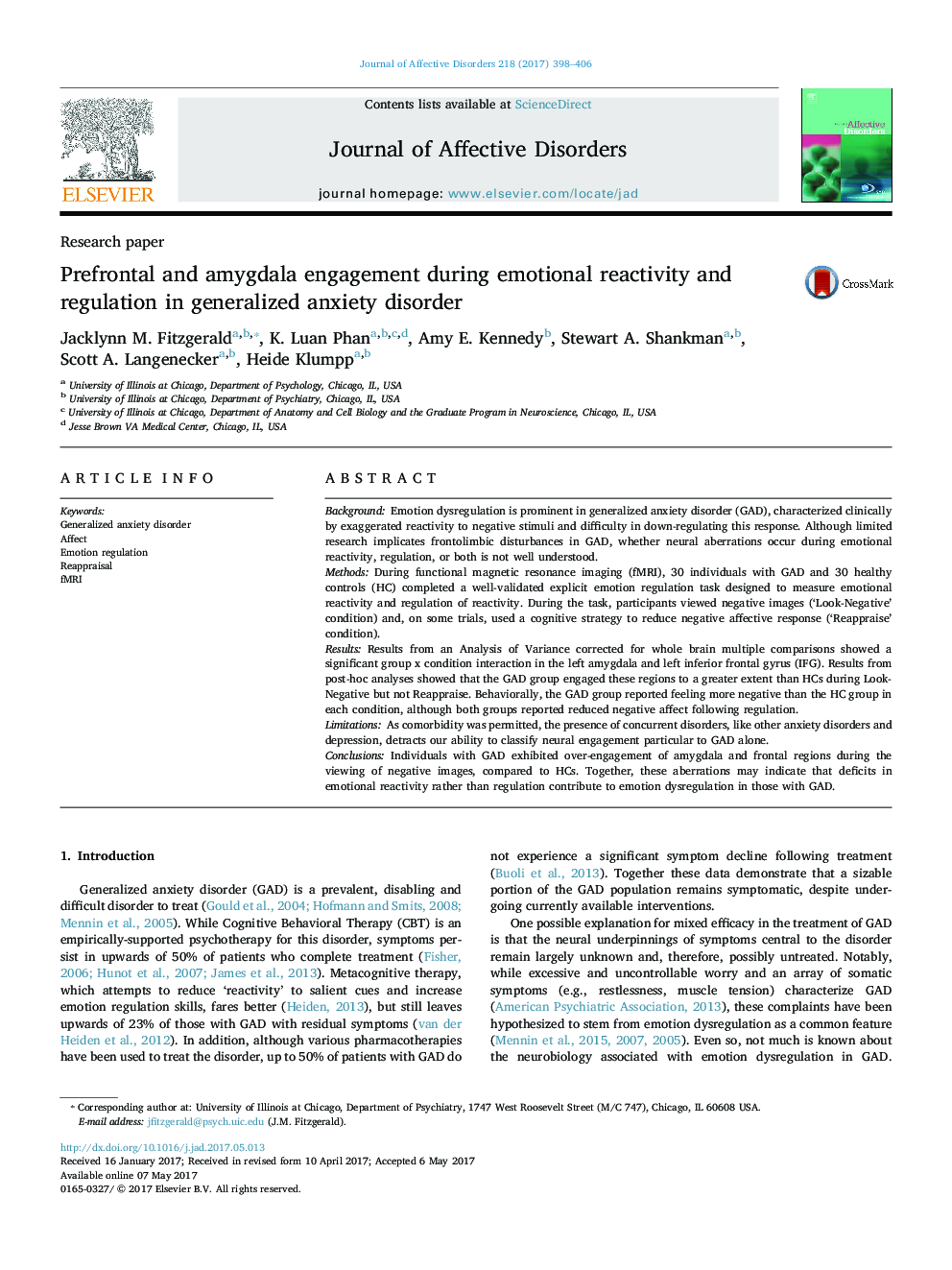| کد مقاله | کد نشریه | سال انتشار | مقاله انگلیسی | نسخه تمام متن |
|---|---|---|---|---|
| 5721975 | 1608107 | 2017 | 9 صفحه PDF | دانلود رایگان |
- A neuroimaging study of emotional reactivity and regulation in generalized anxiety disorder (GAD).
- Individuals with GAD exhibited exaggerated amygdala and inferior frontal gyrus activation in response to negative images.
- Findings support the importance of underlying neural disturbances tied to emotional reactivity in GAD.
BackgroundEmotion dysregulation is prominent in generalized anxiety disorder (GAD), characterized clinically by exaggerated reactivity to negative stimuli and difficulty in down-regulating this response. Although limited research implicates frontolimbic disturbances in GAD, whether neural aberrations occur during emotional reactivity, regulation, or both is not well understood.MethodsDuring functional magnetic resonance imaging (fMRI), 30 individuals with GAD and 30 healthy controls (HC) completed a well-validated explicit emotion regulation task designed to measure emotional reactivity and regulation of reactivity. During the task, participants viewed negative images ('Look-Negative' condition) and, on some trials, used a cognitive strategy to reduce negative affective response ('Reappraise' condition).ResultsResults from an Analysis of Variance corrected for whole brain multiple comparisons showed a significant group x condition interaction in the left amygdala and left inferior frontal gyrus (IFG). Results from post-hoc analyses showed that the GAD group engaged these regions to a greater extent than HCs during Look-Negative but not Reappraise. Behaviorally, the GAD group reported feeling more negative than the HC group in each condition, although both groups reported reduced negative affect following regulation.LimitationsAs comorbidity was permitted, the presence of concurrent disorders, like other anxiety disorders and depression, detracts our ability to classify neural engagement particular to GAD alone.ConclusionsIndividuals with GAD exhibited over-engagement of amygdala and frontal regions during the viewing of negative images, compared to HCs. Together, these aberrations may indicate that deficits in emotional reactivity rather than regulation contribute to emotion dysregulation in those with GAD.
Journal: Journal of Affective Disorders - Volume 218, 15 August 2017, Pages 398-406
